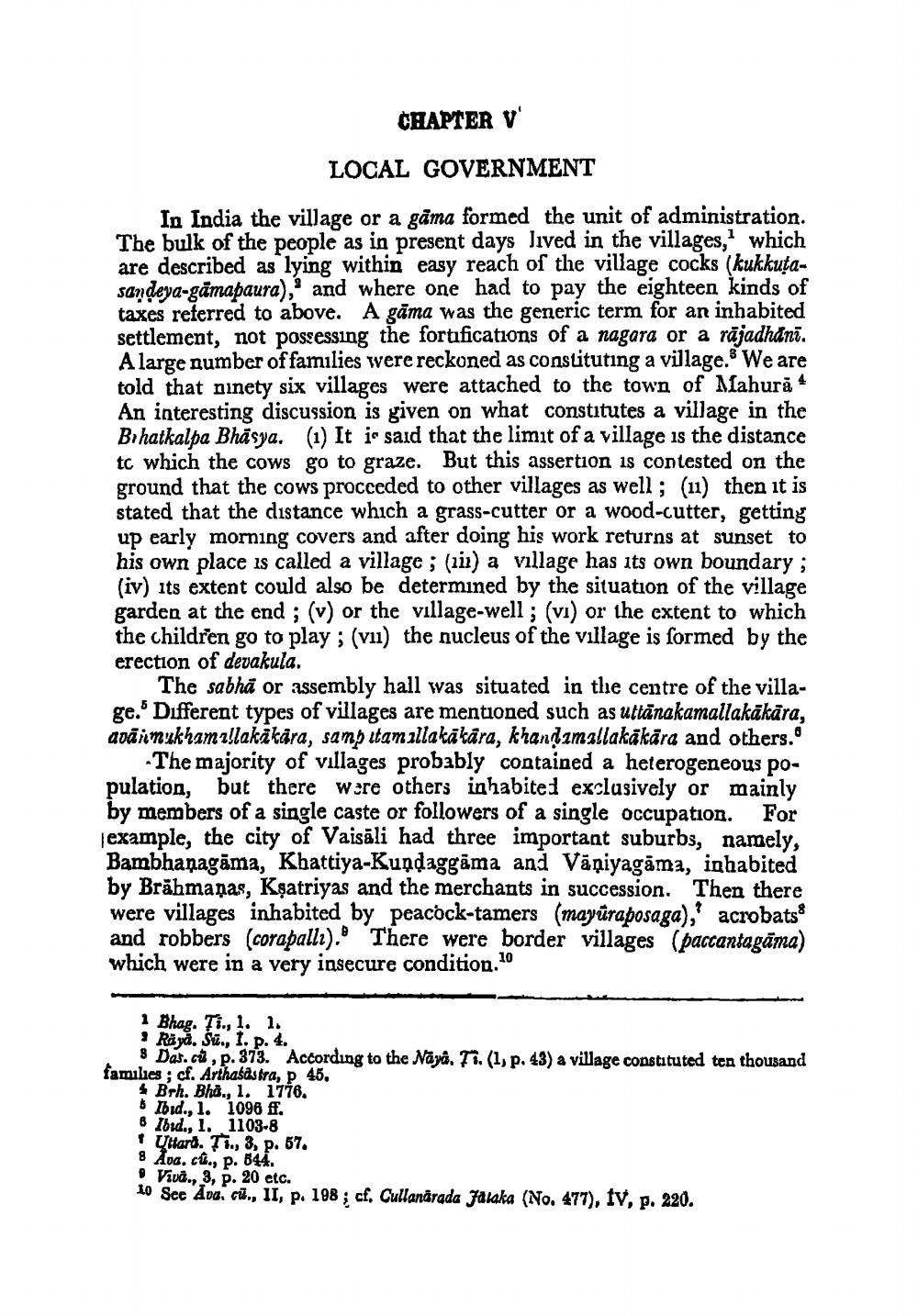________________
CHAPTER V LOCAL GOVERNMENT
In India the village or a gáma formed the unit of administration. The bulk of the people as in present days lived in the villages," which are described as lying within easy reach of the village cocks (kukkutasandeya-gämabaura),' and where one had to pay the eighteen kinds of taxes referred to above. A gāma was the generic term for an inhabited settlement, not possessing the fortifications of a nagara or a rājadhani. A large number of families were reckoned as constituting a village. We are told that ninety six villages were attached to the town of Mahura 4 An interesting discussion is given on what constitutes a village in the Bihatkalpa Bhäsya. (1) It is said that the limit of a village is the distance to which the cows go to graze. But this assertion is contested on the ground that the cows proceeded to other villages as well; (11) then it is stated that the distance which a grass-cutter or a wood-cutter, getting up early morning covers and after doing his work returns at sunset to his own place is called a village ; (iii) a village has its own boundary ; (iv) its extent could also be determined by the situation of the village garden at the end ; (v) or the village-well; (vi) or the extent to which the children go to play ; (v1) the nucleus of the village is formed by the erection of devakula.
The sabhā or assembly hall was situated in the centre of the village. Different types of villages are mentioned such as uttanakamallakākāra, avaimukhamıllakākära, sanitamallakākara, khandimallakäkāra and others.
The majority of villages probably contained a heterogeneous population, but there were others inhabited exclusively or mainly by members of a single caste or followers of a single occupation. For example, the city of Vaisāli had three important suburbs, namely, Bambhaņagāma, Kbattiya-Kundaggama and Väņiyagāma, inhabited by Brāhmaṇas, Kşatriyas and the merchants in succession. Then there were villages inhabited by peacock-tamers (mayuraposaga), acrobats and robbers (corapalli). There were border villages (paccantagāma) which were in a very insecure condition.10
1 Bhag. Ti., 1. 1.
Rävă. Su., 1. p. 4.
8 Dat.cü, p. 373. According to the Naya, T.(1, p. 43) a village constituted ten thousand families; cf. Arthasastra, p 45.
Brh. Bhi., 1. 1776. 6 Ibid., 1. 1096 ff. 8 Zbrd. 1. 1103-8 1 Uttard. Ti., 3, p. 57 8 Ava.ct., p. 844.
Viva., 3, p. 20 etc. 10 Sec Ava. c., II, p. 198; cf. Cullanarada Falaka (No. 477), IV, p. 220.




